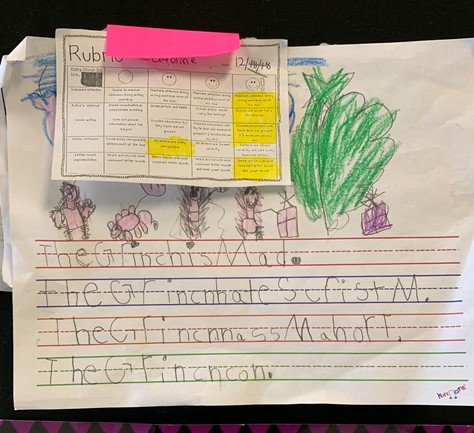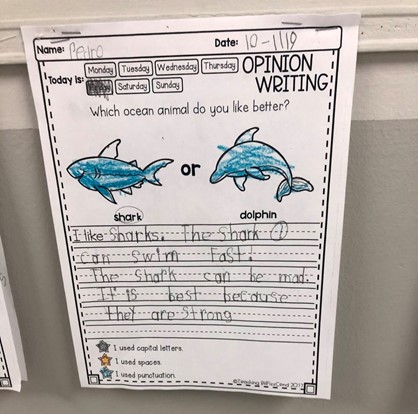Cracking the Writing Development Code: Teaching Writing to Kindergarten, 1st, and 2nd Grade Students
February 13, 2021 October 26, 2021
Early literacy starts when students begin to scribble lines and shapes on their paper. This early form of writing is based on a student’s personal code, or their ideas about how to represent their ideas.
To encourage a love for writing in young learners, we move through the following writing development phases:
- We begin with their code
- We move to the alphabetic code
- And finally, we give them things to write about that they are already interested in
Step 1: Help Young Students Translate Their Code
For most children, the epiphany that they can share their thinking with others using more than pictures is an exciting moment. They often cannot wait to share their writing with their teacher, friends, and family. When a child shares their code with us, we are able to affirm for them that scribbly lines do in fact mean something!
These conversations are even more special when we explain that they are the only ones able to read their code to others. We can then reinforce important details for them to remember, as well as praise their efforts. As students translate their code for us, it is important to help them see how what they wrote can be translated using the alphabetic code.
Writing Develops to Real Words and Simple Sentences
As students continue to learn the alphabet, they will be able to move away from their own code to writing real words and simple sentences. But as almost every primary teacher knows, this change takes time and a systematic process for connecting all aspects of a literacy lesson back to writing. The most successful teachers know how to use students’ writing to “crack the code” about which writing skills students know, use, or abuse, and design their literacy instruction to give students the modeling, practice, scaffolds, and feedback they need to be successful.
Step 2: Progressing to the Alphabetic Code

As students grow their independent writing skills, they will continue to use any aspect of the alphabetic code that they have automatized, including remembering what they want to write and what word they are working on, to use spaces between words, to begin a sentence with an uppercase letter and close it with an ending mark, that each sound in a word they want to write has a corresponding symbol, vowels can work alone or together, some letters work together but do not look like how they sound, and really the list goes on and on.
How do Educators help students master all of these critical skills?
When we read, we decode. That is, we look at the symbols on the page and turn them into sounds, and then words that we read in order to understand what we read.
When we write, we encode. We know what we want to write, but we have to take the sounds in the words and turn them into corresponding symbols in addition to all of the other writing mechanics that writers have to master.
The more our students move between decoding and encoding, the quicker they will learn the alphabet. That said, when we read, we write, and when we write, we read.
Step 3: Give Them Things to Write About What They Are Already Interested In
Here are a few tips to help you get your students excited about writing:

- After listening to or reading fiction, they could write to a character of their choice, about a topic that they want to write to that character about. For example, if they heard the story of Goldilocks, they could write to her telling her why she should listen to her parents, or why she should not go into people’s houses, or why she should not break people’s things. As students write, encourage them to express their opinions and ideas using the code they know; theirs. You do not need to correct every spelling or grammar mistake, simply focus on letting them share their writing with you or another student.
- When students are working on non-fiction, have them write facts about things that they know a lot about. For example, they could write about a family member, their school, their best friend, an animal that they know a lot about, things that they see during the day and at night, write to explain how to do something, etc. Students already know a lot about these topics and they will most likely appeal to their curiosity.
- Whether writing about fiction or nonfiction, use a graphic organizer to help students connect ideas. One versatile one to use early on is a four-box organizer. Its simplicity will make it easy for students to use independently, and the organization will make writing connected sentences easier.
If we encourage students with the proper writing development, beginning with their code and then moving to the alphabetic code, and give them things to write about that they are already interested in, then we will have a much better chance of teaching our students to write and to love writing.
Want to know more about how to use writing to support Early Literacy? Connect with us to discuss these strategies, as well as other ways you can increase your teaching strategies toolbox!
